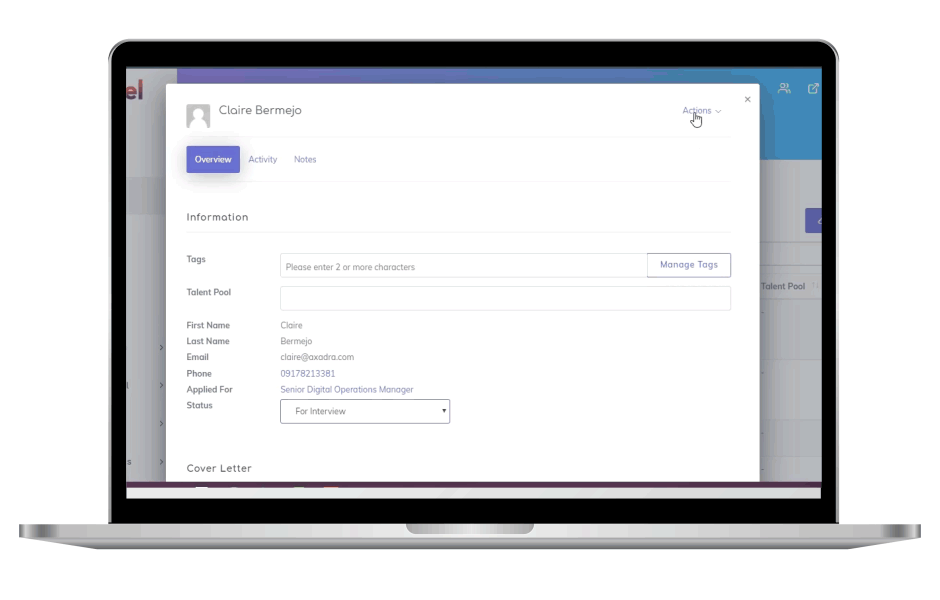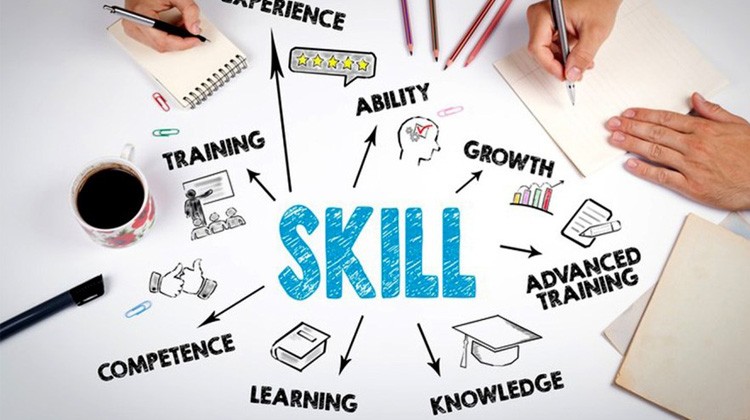13 HR Best Practices to Implement in the Workplace
People are a business’ best resource, and attracting and retaining top talent is vital for success. The data is clear: employee retention reigns supreme. 20% of businesses prioritize keeping their best people on board. This reflects the need to focus on building a thriving workplace that fosters a sense of purpose, loyalty, and satisfaction.
But how do you create such an environment? The answer lies in implementing HR best practices. Although every company is different, there are basic HR principles that should be fundamental to every good business.
Let’s explore various aspects of HR management that will unlock the full potential of your workforce and build a workplace where employees feel valued, motivated, and empowered to achieve their best.
What are HR Best Practices?
HR best practices are universally accepted human resource management principles that apply across all industries no matter the time and place. These practices are building blocks, designed to be adapted and customized to fit the specific needs and culture of your workplace. While workplaces and trends may change rapidly, good HR practices remain relevant because they address essential human needs and organizational goals.
Characteristics of Strong HR Practices
Focused on Core Principles
HR best practices are guided by core values like fairness, respect, employee welfare, and company success. These remain constant regardless of industry trends or technological advancements. Employees only stay when they feel appreciated, have a clear understanding of their roles, and feel respected within the organization.
Adaptable
The strength of HR best practices lies in their adaptability. While the core principle of clear communication might stay the same, how you achieve it can change. For example, daily face-to-face meetings might be ideal for a startup, while a larger enterprise is better off with a project management platform for communication. The key is to identify which works best for your specific situation and setup.
Mutually Beneficial
Human resource management aims to create a mutually beneficial environment. This promotes collaboration, mutual trust, and respect among employees and management. In this setup, the organization achieves its goals while providing fair compensation and opportunities for its workers.
Aligned Strategically
Best HR practices shouldn’t exist in a silo. They should align with your overall business strategy. For instance, if your company prioritizes human capital, your HR practices might focus on effective talent acquisition.
Compliant
Staying up to date on labor laws and regulations is not an option but a necessity. HR best practices ensure your workplace operates within legal boundaries and protects the rights of both employers and employees
How HR Best Practices Benefit Organizations
HR best practices are tried and tested strategies. However, some organizations are still skeptical and unconvinced of their value. They view HR initiatives as merely theoretical to business operations instead of based on evidence. This belief can stem from a variety of reasons, including past negative experiences or a lack of tangible results to link HR best practices to business outcomes.
Despite this, adopting a strong view towards HR practices will benefit organizations in the following ways:
Improved Talent Acquisition
In the past, talent acquisition felt like a pray-and-spray method, hoping to reach the right candidates. Data-driven recruitment has become a game-changer for HR. By analyzing hiring data, HR can identify the most effective channels to reach top talent, personalize outreach, and predict candidate success. This not only improves the quality of applicants but also streamlines the hiring process.
Employee Growth and Development
Strong HR practices such as transparency and performance reviews demonstrate your commitment to your employees’ growth and well-being. This fosters a sense of value and motivates them to continue to work hard.
Employee Engagement and Retention
Losing experienced employees is expensive and time-consuming. New research shows that it takes 44 days for a company to fill an open position. By implementing HR practices that address employee needs and concerns, you can significantly reduce turnover rates and save your company valuable resources.
Solid Organizational Culture
When employees feel valued and appreciated, it translates to a positive company culture. This attracts new talent and strengthens your employer brand, making you a more attractive place to work.
Operational Efficiency
Incorporating HR practices with business processes helps streamline tasks and establish clear protocols. This enables the HR department to focus on strategic decision-making and more important matters, such as employee onboarding and succession planning.
Improved Business Performance
Effective HR practices ensure employees understand their roles and have the tools and resources they need to succeed. This clarity translates to increased productivity and improved performance.
Essential HR Best Practices You Should Know and Do
Now that you know how these best practices will benefit your business, let’s discuss each principle and how you can implement them:
1. Selective Hiring
The foundation of a strong workforce lies in effective recruitment and selection processes. Implementing a thorough and structured hiring process ensures that you attract and select candidates who are the best fit for your company culture and job requirements.
In this regard, selective hiring is one of the most effective HR best practices for hiring. You should focus on the candidates you want and rule out the ones that wouldn’t be an ideal fit. The best way to do this is through skill-based vs. culture-fit hiring. Both skill and cultural fit are important aspects, and the best approach is to find the right balance. Hiring for both ensures that you build a talented and diverse team that can get along well.
2. Compensation and Benefits
A comprehensive compensation and benefits package is crucial to attracting and retaining top talent. Ensure that your compensation packages are fair and competitive within your industry. There should also be clear guidelines about salary increases, bonuses, and other opportunities that allow employees to get better pay. Additionally, include health insurance, retirement plans, and other perks that meet the needs of your employees.
3. Positive Onboarding
Congratulations, you hired the best candidate! But your job doesn’t end there; it’s time to set them up for success and ensure they stay with the company in the long run. Some companies often fail to pay attention to the early experiences of newcomers and employee onboarding challenges, such as unclear timelines and lack of engagement.
A well-structured onboarding program helps newcomers acclimate quickly and effectively without feeling overwhelmed. Create a positive employee onboarding experience by including orientation sessions, mentorship, regular check-ins, and training on company policies, culture, and job-specific tasks.
4. Ongoing Training and Professional Development
Employees who feel they are utilizing their skills at work and contributing to the company’s growth are more likely to stick around. As they increasingly seek value and purpose at work, you should be able to provide them with skills-specific training so they feel that they are growing, not stagnant.
5. Cloud-Based HR Tools
Good HR practices can only be considered “good” if they are working—making processes easier and bringing positive business outcomes. However, the only way HR teams can focus on their core competencies is if they are assisted by tools that automate and streamline tasks across each stage of the employee lifecycle.
For example, applicant tracking software makes hiring more efficient and improves the quality of hires. Investing in such technology-driven tools can provide substantial value and a competitive edge to an organization.
6. Workplace Safety
While some only associate workplace safety with manual labor such as factory work or heavy machinery, this is a misconception. Workplace safety has always been important and applicable to all types of work environments. To ensure workplace safety, enforce safety protocols and training specific to your industry. You should also conduct regular safety inspections to identify hazards and take preventive measures accordingly. By prioritizing workplace safety, employees have peace of mind while performing their duties and safeguard the company against any legal liabilities and penalties.
7. Regular Performance Reviews
Employees value ongoing feedback. Contrary to popular belief, employees actually want to have their performance evaluated so they know where they stand and what they can improve on. Performance reviews should be conducted at least annually, with clear goals and expectations set beforehand. Offer constructive criticism with actionable steps for improvement and recognize achievements to keep employees motivated. This fosters better communication, boosts engagement, and aligns individual goals with company objectives, leading to a more effective workforce.
8. Performance-Based Bonuses
Employees want recognition, but merely recognizing talent is not enough. You need to reward exemplary performance with bonuses or incentives so that employees feel appreciated and credited for their hard work. It also gives them a sense of pride and ownership for their contributions to the company.
There are many ways you can go about rewarding outstanding employees. A few suggestions include giving an “Employee of the Month” award, sending a gift basket, paying for an out-of-office activity, or letting them attend a conference as a company representative. Recognizing employees will give them something to strive for and foster healthy competition.
9. Flexibility and Work-Life Balance
The COVID-19 pandemic forced businesses to quickly shift from in-office work to remote work. Even if the restrictions have been lifted, some of these companies continue to provide employees with the option to work from anywhere, as long as clear boundaries are set.
Flexible work arrangements like remote work options or compressed workweeks allow employees to choose where they want to work and, to some extent, when they want to work. With this flexibility, employees can better juggle their personal lives and careers. Companies that implement this HR best practice show that they respect their employees’ personal time and trust them enough to accomplish their tasks with minimal supervision.
10. Employee Engagement
A truly engaged workforce feels valued, motivated, and invested in the company’s success. This requires fostering a work environment with open communication channels where employee voices are heard. Actively listen to feedback, provide opportunities for professional development and growth, and publicly recognize achievements. Engaged employees are more productive, contribute to a culture of innovation, and are less likely to leave, leading to a thriving and successful organization.
11. Open Communication with Business Leaders
Open communication creates a culture in which employees feel trusted and involved. It also discourages hearsay or negative and untrue assumptions. When business leaders share information and listen to ideas and feedback, employees feel more included and motivated.
This can involve holding town halls, creating anonymous feedback channels, or scheduling regular check-ins. By actively listening to employee concerns and ideas, leaders can make informed decisions, address issues promptly, and foster a sense of ownership within the company.
12. Termination and Offboarding
Even when an employment relationship ends, it’s crucial to handle it professionally. Consistency in processes and treatment across terminations, whether voluntary or not, shows integrity and minimizes confusion. Follow legal procedures, provide severance packages as per company policy, and conduct exit interviews to understand the employee’s experience. Maintaining a positive relationship with departing employees protects the company’s reputation and promotes a positive employer brand. It’s important to ensure a clean break regardless of the reason for the termination or resignation of the employee so both parties can move forward successfully.
13. Succession Planning
When someone resigns or gets promoted, the transition could be tricky. A detailed succession plan ensures the organization is prepared for any movements within the structure and empowers employees to take on new roles. Identify high-potential employees and invest in their development through training and mentorship programs. Creating a talent pipeline ensures smooth leadership transitions, minimizes disruption, and fosters a culture of career growth within the organization.
Optimize Your HR Practices
Implementing HR best practices is essential for creating a productive, engaged, and motivated workforce. From selective hiring and positive onboarding to continuous training and feedback, these strategies drive organizational success.
As you consider these HR best practices, leveraging technology can further streamline your processes and maximize efficiency. Skillfuel’s free recruitment software is designed to simplify and enhance your hiring process. With features like automated resume screening, interview scheduling, and candidate tracking, Skillfuel empowers you to attract and retain top talent effortlessly.
Sign up for a free version of our software today and experience the benefits yourself!















